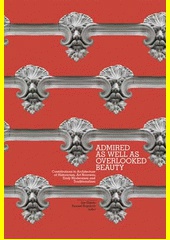Zařazeno v kategoriích: UMĚNÍ, Architektura, Teorie a dějiny umění
Admired as well as overlooked beauty
Galeta Jan, Ragulová Zuzana
Dostupnost
skladem
Vydavatel
Počet stran
286
Místo vydání
Brno
Rok vydání
2015
Formát
A5
ISBN
978-80-7485-090-5
EAN
9788074850905
The rediscovery of a long-overlooked and belittled architecture of Historicism, its city-forming potential as well as its natural link to sculpture, painting and arts and crafts in a certain sense resembled the workflow of an archaeologist, as it retrospectively revealed different cultural layers against the flow of time. Art historians usually did not get to the rehabilitation and understanding of the architecture of the second half of the 19th century in a chronological order through its stylistic predecessors, but over time they began to appreciate the Art Nouveau period and Early Modernism in the context of the design of art history as ideological predecessors of emerging Avant-garde. How do we feel today about stylistic pluralism and diverse creativity of historicist architecture creators? Is Art Nouveau closer to the aesthetic principles and values of the 19th or 20th century? What was the artistic development of early modernists in the interwar period? The international interdisciplinary conference on architecture, urbanism and architectural decoration of the 19th and early 20th centuries aims to acquaint candidates with the latest results, reflections, methodological approaches and new findings of current art history doctoral students and their colleagues from related disciplines, such as the monument preservation. For the balance and enrichment of the discourse any posts either from the modernist perspective or the ones based on traditionalist attitude would be highly welcomed.
Ostatní s tímto titulem kupují:
-
Položka byla přidána do košíku.












